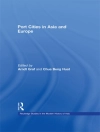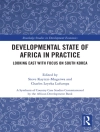Interested in analysing complex systems? Have you considered nuclear magnetic relaxation studies to derive sound conclusions? Here’s how.
Nuclear Magnetic Resonance (NMR) relaxation techniques form a family of powerful tools to study and characterize liquid, solid or semi-solid materials and systems. They provide access to details directly and in wide variable ranges. This book outlines the unparalleled potential of NMR relaxation experiments to elucidate molecular dynamics. The key concepts discussed are correlation functions and spectral densities of the thermal fluctuations of spin interactions.
For users working in technology, chemical engineering, materials science, biomedicine, food science, geophysics and physical chemistry, the text explores the principles, theoretical background and descriptions of typical applications. As an essential part of relaxation data, the focus is on the statistical features of molecular dynamics. The aim is to assist the reader to acquire meaningful nuclear magnetic relaxation data sets and develop appropriate statistical models as a basis for their interpretation.
This unique text is targeted to anyone performing or interested in NMR relaxation experiments from undergraduates to academics and those in industry.
Tabela de Conteúdo
Introduction;Typical Experimental Methods for Studying NMR Relaxation;Spin Systems and Spin Interactions;Local Fields, Motional Averaging, and Relaxation Limits;Spin Relaxation in the High-field Limit;The Stochastic Basis of Spin Relaxation;Intermolecular Dipolar Couplings and Field-cycling NMR Relaxometry as a Tool to Study Translational Diffusion;Impact of Exchange on Relaxation in Heterogeneous Media;Molecular Dynamics in Bulk Nematic Liquid Crystals;Liquids Confined in Mesoscopic Pores;Flow-relaxation Effect in Fluid-filled Porous Media;Chain Dynamics in Polymer Liquids;Elementary Processes of Molecular Dynamics in Aqueous Biopolymer Systems;Relaxation Contrasts in Biomedical Magnetic-resonance Imaging (MRI);Interaction and Motional Averaging in 17O-Enriched Water;Quadrupole Relaxation Enhancement (QRE) for 1H14N and 1H2H Dipolar Couplings;Some Criteria and Hints for the Interpretation of Experimental NMR Relaxometry Data;Implications of Superimposed Spin States












